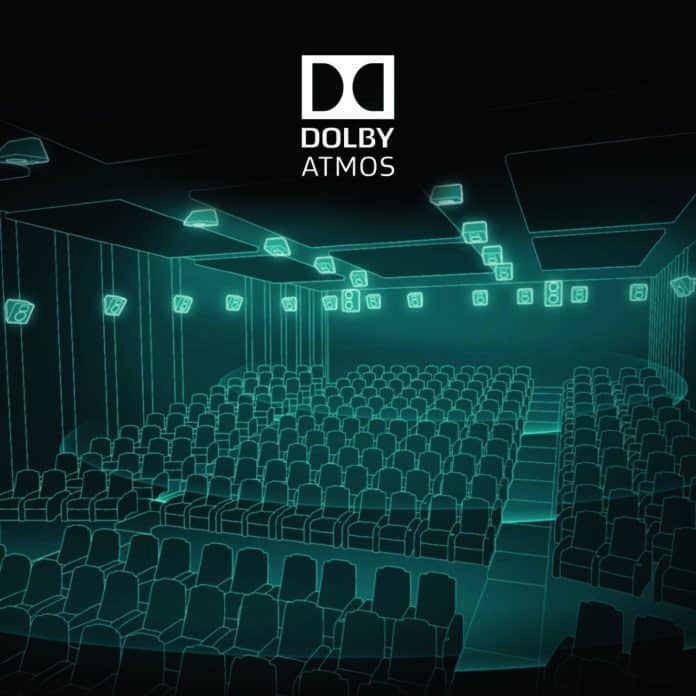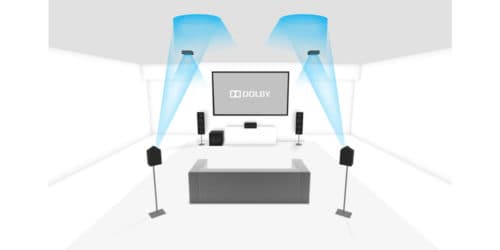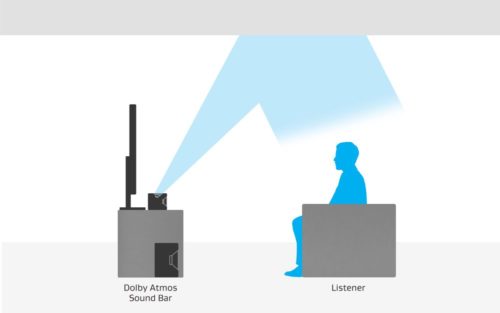First things first: I’m a headphone enthusiast, not a home audio enthusiast. Why? Well, in my cramped apartment in Brooklyn, any given room is far too irregularly-shaped to be made acoustically optimal, and my roommates will probably chew me out anyway if I play the weird noise music I typically listen to out loud.
As such, I watch movies, play games, and listen to music exclusively on headphones. No surround sound for me – when I watch movies, all the surround sound audio is mixed down to stereo anyway, which often leaves things sounding flat and unnatural, not immersive in the slightest. C’est la vie.
So why am I writing about Dolby Atmos? Well, Atmos is working to alleviate a lot of those problems for me as a chronic headphone listener, by embracing an “object-based” form of mixing rather than the traditional channel-based method. It’s not the only player out there: competitor DTS:X is another similar form of surround sound. But Atmos is pretty widely-implemented in theaters, and it’s coming quickly to home audio. Of course, I’m most interested in Atmos for Headphones. But first…
ATMOS FOR HOME SETUPS
But let’s back up for a second. Maybe you’re not like me – maybe instead you’re looking at surround sound systems for your home theater. In this case, the major strength and innovation of Atmos is the introduction of height channels.
A traditional surround sound system would have five or seven channels for positional audio, and one subwoofer (hence 5.1 and 7.1). But those five or seven positional channels would be spread across what’s essentially assumed to be a flat plane. Though movie theaters (and some home theaters) aim to enhance the sense of immersiveness by placing the speakers above the audience, the sound is mixed as if those five or seven positions will be on a flat plane – no height.
By contrast, Dolby Atmos adds height channels – up to 10 of them, but more typically 2 or 4. Hence, rather than 5.1 or 7.1 surround, we have 7.1.2, 7.1.4, or (in some particularly outlandish cases) 22.1.10 surround.
If you have ceiling-mounted speakers, this is easy enough to imagine – using a Dolby Atmos-enabled audio-video receiver, you can adapt your home system to Atmos relatively easily by routing the height channels to those ceiling-mounted speakers.
Even without those, though, it’s easy enough to use Atmos with an Atmos-enabled soundbar. These soundbars will use upward-firing speakers – the idea is that the sound will bounce off the ceiling, creating the illusion of height. Anecdotal accounts suggest that these soundbars work pretty well at creating the illusion that sound is coming from above you, without any need for disruptive and expensive ceiling installation.
The working philosophy with Atmos is that, with height in play, greater immersion can be achieved in movies and video games. Frankly, I see no reason to doubt that. Atmos now works with Amazon Prime Video, Netflix, Hulu, certain games, and others.
OBJECT-BASED AUDIO
One of the taglines of Atmos is “freeing sound from channels.” In other words, when audio engineers mix movie soundtracks, they typically do so by assigning audio cues to channels; each channel is then routed to a particular speaker. Simple enough, but as a result, things change ever so slightly with the position of the speakers. Furthermore, when the signal is mixed down to stereo, you lose a lot of the benefits and positional specificity of surround sound.
Atmos sets itself apart by allowing audio engineers to specify a position for a sound, rather than determining its position by mixing it across channels. Atmos will then use the position of an audio cue as provided by audio engineers and do the rest of the mixing itself, sending it to the appropriate channels depending on where each speaker is located. In short, it can take the audio as specified by a movie or game’s audio engineers and interpret it to fit any given system.
ATMOS FOR HEADPHONES
And so we get to headphones. One of the greatest lamentations of headphone users throughout history has been that headphones simply can’t replicate the out-of-head experience one gets with a good speaker setup. We’ve seen numerous attempts to remedy that, with headphones like the HD800 boasting the ability to properly “image” like no other headphone on the market. But hardcore audiophiles have always said that even the best pair of headphones is no replacement for a good speaker setup. After all, most professional studios use speakers for mixing, rather than headphones – and the amount of recordings made with headphone listening in mind is supposedly still relatively small.
But increasingly, headphones look like a way forward for many people who can’t afford a whole home theater setup, or who don’t have the space for one. Myself included.
Atmos is important because it can interpret the original audio from a film or game with more specificity than an ordinary surround sound system. In other words, sound cues retain their position in space.
Atmos for headphones is easy enough to demo on your own computer at home. I tried it using my Etymotic ER2SE earphones. (For those who aren’t in the know, Etymotics are known for their lack of imaging capabilities.) The resulting sound was impressive, for sure, although not quite enough to overcome the small soundstage of the Etymotics. But that’s hardly Atmos’s fault. Use Atmos with the HD800S, and the sound is bound to be a bit more immersive than sticking with the regular stereo mix.
That said, when it comes to regular stereo audio, I didn’t find that Atmos particularly did anything. That’s fine for me, as I don’t like “enhancements” to my audio that I can’t control anyway.
HOW DO I GET IT?
If you’re looking for Atmos for Headphones, that’s easily purchaseable through Dolby Access on the Microsoft Store. There’s a 7-day free trial option, or you can get it permanently for $14.99. Then, you’ll be able to play Atmos-enabled games and watch Atmos-enabled movies. Dolby also claims that it’ll improve traditional 5.1 or 7.1 surround sound, but your mileage may vary on that. Additionally, some games, like Overwatch, include Atmos for Headphones without the need to install anything.
For a home theater setup, things get a bit more involved. You’ll need an Atmos-enabled AV Receiver, as well as upward-firing or ceiling-mounted speakers to get the full effect. And you’ll want to check whether your streaming service of choice offers Atmos with your streaming device.
It’s worth mentioning that one doesn’t have to buy Atmos to get surround sound from your headphones. Windows includes Windows Sonics, a free surround-sound software. Dolby claims improved performance from Atmos, but it’ll be easy enough to try it yourself to settle any doubt.
Atmos for Headphones can also work on your phone, if you’re interested. I’d take it for content designed around Atmos, and leave it for anything else.
IN CONCLUSION & WHY I CARE
Will I get Atmos? If I were considering a home theater setup, sure, I’d consider getting an Atmos-enabled setup, though I’d more likely just go with stereo (because that’s just who I am). But, listen – the games I’ve played most recently are Super Smash Bros. Ultimate, Celeste, and Chrono Trigger, none of which are known for their spatial audio cues. As for movies, it’s stuff like Dune, Blade Runner, and old Russian films. To put it simply, none of the media I consume is going to be Atmos-enabled for some time now, and I’m not particularly interested in “spatially enhancing” regular old stereo content.
But I do care, because I consider object-based audio a definitively positive thing for headphone users and home theater users alike. By encouraging good practices in sound mixing, Dolby, along with is taking a step toward making immersive audio more accessible for everyone, and that’s something I can get behind.
MAJORHIFI may receive commissions from retail offers.











